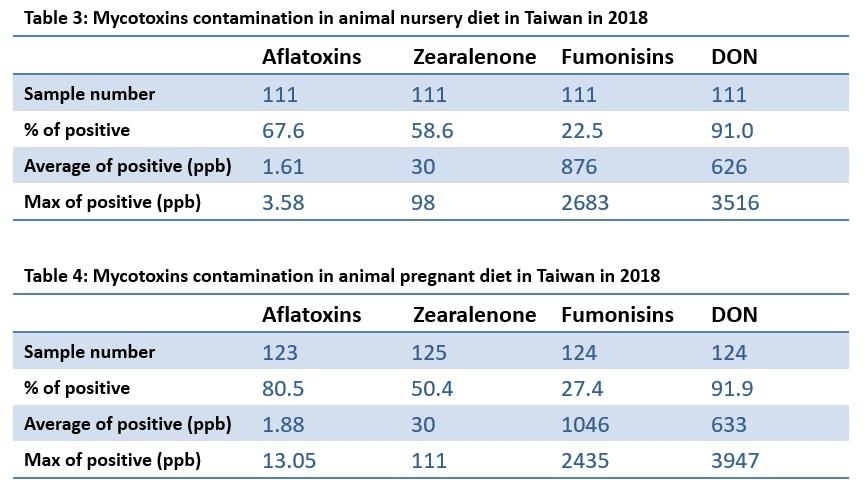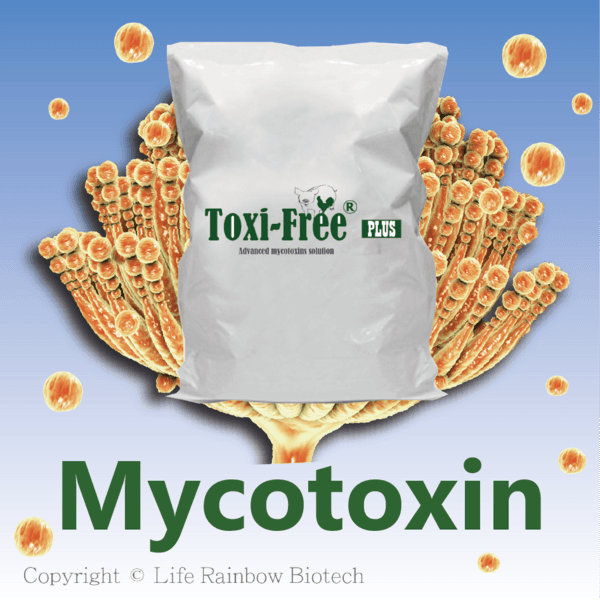In 2018, 430 randomly collected feed samples of raw materials and feed mills in farms were analyzed. Samples were tested for aflatoxins (B1, B2, G1, and G2), zearalenone, fumonisins (B1, B2, and B3) and deoxynivalenol by the ELISA Mycotoxin analysis kit (Romer Labs®).
Results
Of 430 feed samples collected, 90.9% were contaminated with deoxynivalenol (table 1). The maximum concentration of deoxynivalenol was over the limit of quantification in this survey.
Data on corn meal, nursery, and pregnant diet were conducted to give the prevalence of mycotoxins. Out of total 430 samples, 84 samples from corn meal were analyzed that observed 84.5% of feed were contaminated with deoxynivalenol (table 2).
Of 111 samples of nursery feed collected, 91.0% of samples were contaminated with deoxynivalenol (table 3). The occurrence of mycotoxin in pregnant diet also analyzed. Deoxynivalenol and aflatoxins were most prevalent mycotoxins in pregnant diet, detected in 91.9% and 80.5% of samples respectively. (table 4).
Conclusion:
In 2018, the most prevalent mycotoxin in Taiwan was deoxynivalenol, detected in 90.9% of samples including raw materials and finished feeds. Aflatoxins were found in more than 50% of samples in 2018, which showed higher occurrence compared to previous year. Co-occurrence was also observed in this survey. A full of 79% samples contained at least two or more mycotoxins, that may give synergistic complications on animal performance and immunity that cause financial loss of producers. Mycotoxin contaminated feedstuffs will raise the risk to impact animal production and economic profit. According to the reginal survey, feed manufacturers and animal producers can be aware of the occurrence of mycotoxins and implemented actions into mycotoxin management.










